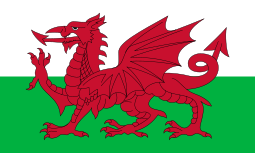Glossary
Find definitions of some key terms used throughout the Charity Digital Code of Practice.
Accessibility
Accessibility means that websites, tools and technologies are designed and developed so that people with disabilities and additional needs can use them. Please also take into account our guidance on digital inclusion referenced in the Code.
Agile
Agile means two things. The first is agile working, which is an ethos of flexibility and remote working. The second is agile methodology, which is an alternative to conventional sequential (or ‘waterfall’) project management. The term comes from software development, most notably iterative working. The idea is that it helps teams assess the direction of travel for a project regularly, reducing development costs and the time it takes to get a product to market.
Analytics
The data which tells you how your channels are performing, such as how many people visit your website or who follows you on Facebook.
API
API stands for Application Programming Interface, or how one website can plug into another. An API is a software intermediary that allows two applications to talk to each other by using code, for example the use of an online giving platform’s API as a charity’s online donation page.
Channels
Channels are any platforms you use to communicate with your audience, such as social media and websites, or online fundraising or payment platforms.
Code
Code is a set of rules or instructions made up of words and numbers, which tells your computer what you want it to do.
Cybersecurity
Cybersecurity comprises technologies, processes and controls that aim to protect systems, networks and data from cyber attacks.
Digital inclusion
Digital inclusion, or reducing digital exclusion, means ensuring that people have the capability to use the internet to do things that benefit them day to day – whether they be individuals or organisations.
Digital strategy
A digital strategy sets out how and why your charity will use digital to achieve its goals.
Emerging technology
Emerging technologies are new technologies or those currently being developed that could change how we live and work, such as new ways of raising money online or automation.
Legacy technology systems
Legacy technology systems are old or outdated technology systems or programmes.
Online tools
Online tools are anything you can use to send data over the internet, encompassing everything from document sharing tools such as Google Drive to online survey tools.
Soft skills
Soft skills are as essential to using digital as technical expertise, such as the ability to communicate, listen, persuade and influence.
Stakeholders
A person, group or organisation that can affect or be affected by your charity’s work. They may include beneficiaries, supporters, donors, volunteers and others.


